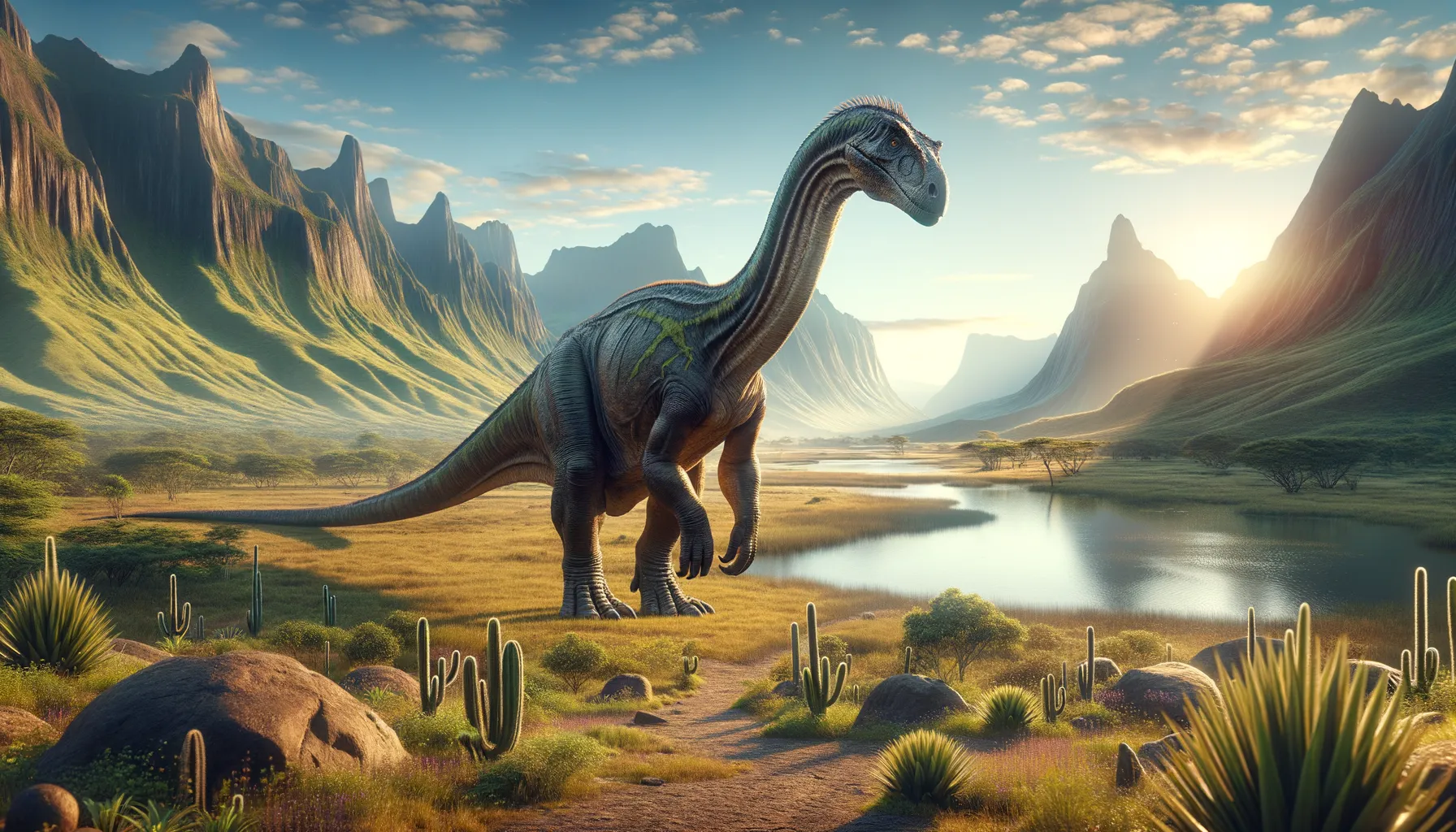
Vahiny
Ancient giant of Madagascar's wild past.
Period
Cretaceous
Length
Over 30 feet long.
Height
About 10 feet at the shoulder.
Weight
Approximately 20-30 tons.
Vahiny was a large herbivorous dinosaur that roamed the island landscape of ancient Madagascar during the Late Cretaceous period. Researchers believe it was a sauropod, a group known for their enormous size, long necks, and tails. Vahiny's discovery added valuable insight into the unique ecosystem that existed in Madagascar millions of years ago, a time when dinosaurs thrived in diverse and isolated habitats.
Diet
Vahiny was an herbivore, feeding on a variety of plant material. Its diet likely included ferns, conifers, and other vegetation available during the Cretaceous period.
Hunting
As a herbivore, Vahiny did not hunt other animals. It likely relied on its size and group behavior as defense mechanisms against predators.
Environmental challenges
Vahiny lived on the isolated island of Madagascar, which may have caused adaptations unique to its environment. Limited food resources during droughts or climate changes would pose significant challenges. Its large size required vast amounts of food, making it vulnerable to shifts in the ecosystem that affected vegetation availability.
Speed
Likely moved slowly due to its size.
Lifespan
Estimated to live several decades.
First discovery
Discovered in Madagascar, 2007.
Fun Facts
- Vahiny was a type of dinosaur known as a sauropod, which means it was likely a long-necked, large-bodied plant-eater.
- The name 'Vahiny' means 'traveler' in Malagasy, the language of Madagascar, where its fossils were discovered.
- Vahiny lived during the Late Cretaceous period, around 70 million years ago.
- It was discovered in the Maevarano Formation in Madagascar, a site famous for its rich fossil finds.
- The bones of Vahiny help scientists understand more about the diversity of dinosaurs on the island of Madagascar.
- Vahiny is known mainly from its partial fossil remains, specifically parts of its skull.
- Despite its size, like other sauropods, Vahiny had a relatively small head compared to its body.
Growth and Development
Vahiny, like other sauropods, would have grown rapidly in its early years to escape predation. It may have had growth spurts, similar to other large dinosaurs, during favorable environmental conditions. The development of a strong skeletal structure was crucial to support its immense weight as it grew.
Habitat
Vahiny inhabited Madagascar, which during its time was a lush, isolated environment. The region featured diverse ecosystems including forests, riverbanks, and open plains. This dinosaur likely utilized the different areas for feeding and protection.
Interaction with other species
Vahiny coexisted with other dinosaurs and prehistoric creatures, potentially competing for resources. Its interactions would include both peaceful coexistence with other herbivores and evading predators. Fossils suggest mixed herds of different species might have been common for protection.
Natural lifespan
Vahiny's natural lifespan could exceed several decades.
Reproduction
Vahiny likely laid eggs, as was typical of sauropods, possibly in communal nesting areas to enhance survival. Parental care details are unknown, but nest protection might have occurred until hatchlings were more independent.
Social behaviour
Vahiny may have lived in groups or herds, which provided safety in numbers against predators. Its social behavior could involve group foraging and protection of young. The herd structure may have been dynamic, changing with environmental conditions.
Fossil locations
Fossils of Vahiny have been found in the Maevarano Formation in Madagascar. These findings contribute to understanding the diversity of Cretaceous dinosaurs. The location reflects Vahiny's adaptation to an island ecosystem, unique from mainland species.
